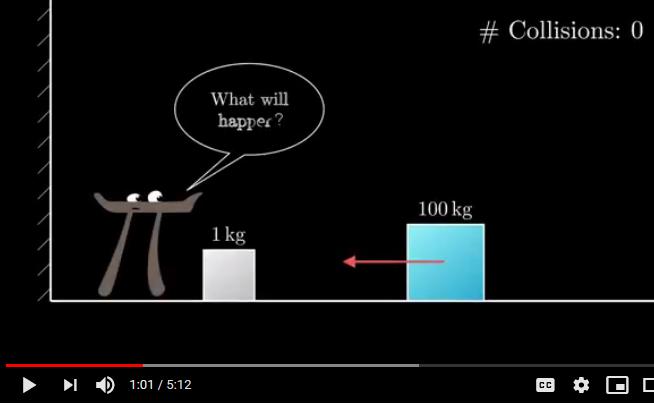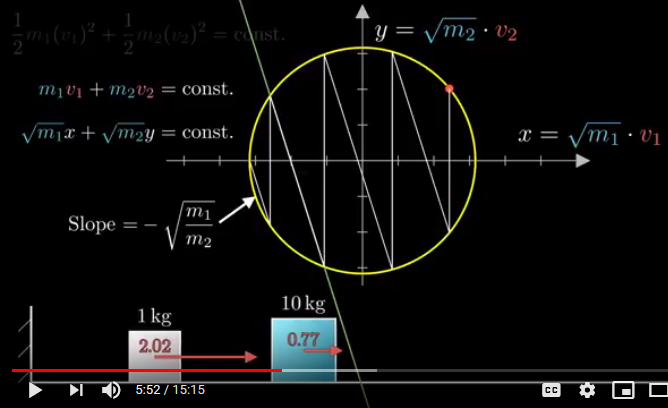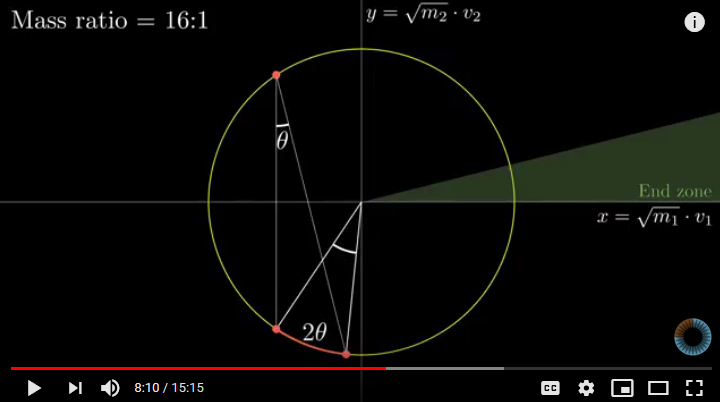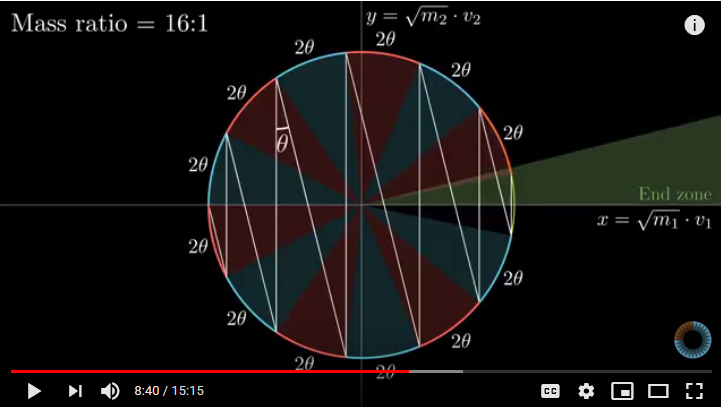In order to conceptually bridge the Wigner MATH-PHYSICS GAP, it is helpful to see how deeply embedded quantitative and structural properties are in the physical world. The phase space approach is helpful, and a vid on how colliding blocks compute digits of pi (under ideal circumstances) will help. The vid:
It helps to look at some screenshots:

In this first shot (from a part 1 vid) we see a setup where we have a frictionless plane with a rigid wall to the left and two masses that collide. On the first hitting the second, it will hit and bounce back (elastically) from the wall. A second collision with the first block follows and rebound from the wall. This will continue until the second block cannot catch up with the first. Amazingly, depending on the mass ratio, the number of collisions between blocks or with the wall will give digits of pi.
Such suggests that there is a hidden circle, and there is, in an associated phase space — which allows us to see the dynamics from a geometric viewpoint in an associated abstract space:

Here, we see blocks moving so that kinetic energy and momentum are conserved. The circle shows constant kinetic energy and the zigzag jumps come from momentum conservation during collision — the vertical one being due to collisions with the wall of effectively infinite mass (rigidity). Due to collisions, they are switching directions and points on the circle on collisions. And, the angle at the centre will be twice that at the circumference standing on the same arc, here marking three successive collisions:

This continues until a critical value is left. It turns out, that this is when the arc-jump around the circle can no longer achieve a critical value:

The result of all this is that we move, depending on mass ratio, from 3 to 31 to 314 collisions and onward. Which computes pi’s digits.
Of course, we have idealised the system to be friction-free. (In the video, clacks are added as an audio effect, with energy conservation there would obviously be no noise.)
We see here how a physical situation (admittedly idealised) obeys laws of physics which were empirically discovered. These reveal a deeply embedded logic of structure and quantity manifest in phenomena of the world. Where, we may freely move to an abstract, phase space which allows further insight and analysis.
In this case, geometry counts.
Counts to the point that an idealised case would allow computation of digits of pi.
Of course, we could not actually build such a system, but the laws we infer from the observed world help us to form abstract model logic worlds that give us insights and which often help us to understand real world cases with friction etc.
Why all of this is possible is because the physical world is governed by logic of being constraints that are structural and quantitative. Laws, that turn out in aggregate to be fine tuned in ways that enable C-Chemistry, aqueous medium, cell based life. END
PS: Mobius strip cutting exercise: